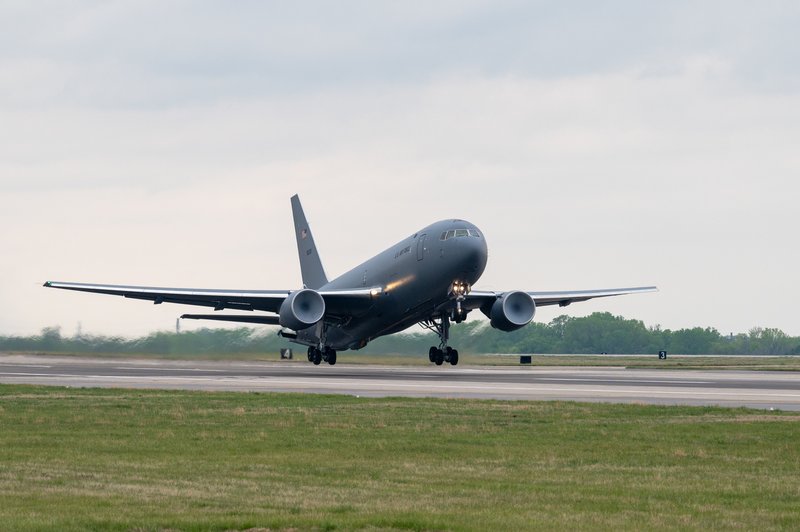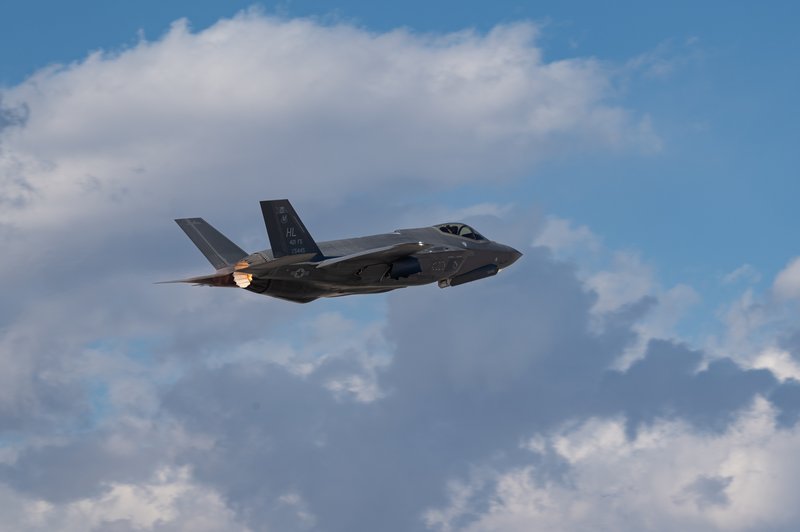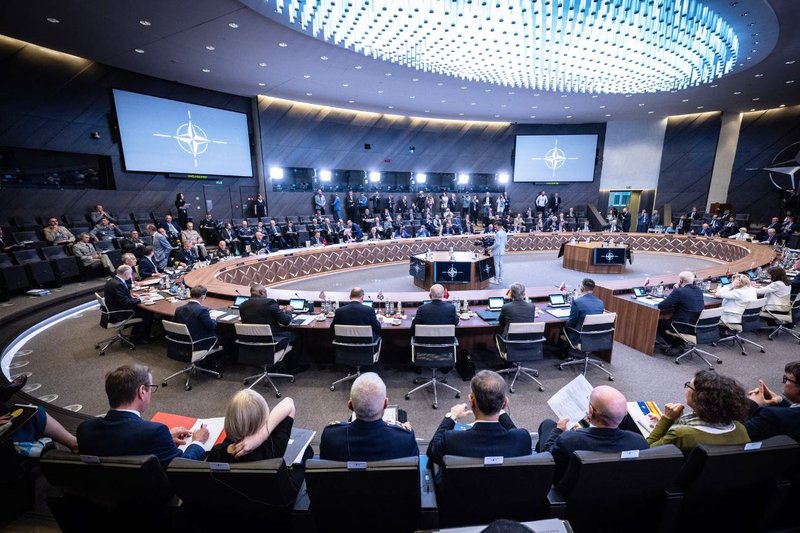Hot topics – the air warfare themes that are making headlines in 2024
As with all industries, aerospace and defence has its mix of long, medium and short themes, projects and points of contention. Two months into the new year, several areas of repeated interest have been frequently seen in reporting and discussion. February’s newsletter takes a rapid tour of five subjects that promise to prove interesting.
In this article:
UAV lessons from Ukraine and Gaza
Woes at Boeing
Last year was a mixed one for the US aerospace giant. Though the Dubai Airshow ended with significant commercial orders, the subsequent Alaska Airlines in-flight emergency on a 737 Max again provided awkward headlines. The apparent quality control issues will undoubtedly impact public and operator confidence in the aircraft and by association its manufacturer... Continues below
Newsletter Sponsor:

Above: Boeing’s recent troubles have centred on the commercial 737, but issues remain for the USAF’s KC-46 tanker programme. (Photo: USAF)
So what’s the defence picture? Though unlikely by itself to sink the company, this issue follows on from similar complaints by the USAF as to the condition of KC-46 tankers. As of 2024 six Category 1 deficiencies were listed, issues viewed as sufficiently serious to jeopardise the aircraft in flight.
Though a Lot 10 purchase of 15 examples at $2.3 billion was clearly welcome, total programme losses for Boeing are estimated at over $7 billon. More export opportunities certainly exist but have yet to develop. These may prove crucial in bringing the programme back towards a cost-positive position.
Concurrently, both the T-7 trainer and F-15EX efforts have seen slow progress. The former has experienced several periods of delay, with the latest hindering delivery of a fourth example due to supply problems.

Meanwhile, although two further new Eagle IIs have now arrived for testing this occurred only after a significant delivery gap in 2023. Production of the F/A-18 seems set to end by the mid-2020s, with no new orders expected.
Although demand for the AH-64 and CH-47 helicopters remain strong – the Riyadh World Defense Show saw extremely solid prospects emerge, the loss of the Future Long-Range Assault Aircraft (FLRAA) contract was undoubtedly painful.
Clearly, the company remains largely successful in terms of the breadth of is air portfolio, long-term contracts and large number of new programmes and technologies in progress, but among both trade and general media there is a view that something will have to change.
The F-35’s future
By comparison with Boeing, Lockheed Martin’s fighter might appear to be in great shape as of February 2024. It has won all recent competitions and the order backlog for exports alone is measured in the hundreds.
Yet, somewhat perversely, as the F-35 is embraced by overseas militaries, its standing in the US and particularly the air force is lukewarm at best. Ongoing poor availability, a succession of incidents and losses, inability to solve engine cooling or software issues and complaints over costs versus economic benefits have all been raised over the last few months.

Above: The F-35 needs a new powerplant solution for Block 4 upgrades to work, which may not please existing international operators. (Photo: USAF)
Apart from the fact that all these questions should have been solved years ago, the future of the wider programme is also in some doubt. An evolved or entirely new engine is regarded as critical for Block 4, the software/capability specification that has been cited as vital for any future conflict such as the defence of Taiwan.
Currently a new core for the P&W F135 seems most likely, but a final and absolute decision on this appears unlikely for months. Meanwhile, GE’s wholly new XA1000 offering remains in the field as an alternative.
This necessary step will inevitably add to the already high cost of Block 4, now estimated at $16.5 billion and already behind schedule. While the individual airframe cost has stabilised at around $105 million for the ‘A’ model, Block 4 elements will see this begin to increase again, in addition to the rise caused by the new engine solution.
While 1,763 examples for the USAF always seemed unlikely, it is now unclear whether that fleet will even reach four figures, and only a percentage will likely be Block 4s (as older models are probably uneconomical to upgrade).
Buying a US combat aircraft has traditionally been a low-risk option for NATO and other allies. But for Canada, Finland, Germany, Switzerland and other new F-35 purchasers, all the above makes for grim reading.
There are already questions about whether the aircraft could be operated by states with limited budgets, so the current position will not have increased confidence.
Arguably the original export customers (Australia, Italy, Japan and the UK) are in a worse position as their fleets have already accumulated significant hours and are generally of an older configuration.
It remains unclear as to how they square the circle of operating an affordable variant when many of theirs have already seen years of service.
UAV lessons from Ukraine and Gaza
Both wars continue to inflict appalling damage and suffering with no clear end in sight. One takeaway is the critical importance of air defence in the face of growing UAV fleets and capable long-range weapons in the hands of both governments and insurgents.
This aspect and its impact on air operations over Ukraine has likely played a strong part in the recent surprise decision by the US Army to cancel the Future Armed Reconnaissance Aircraft (FARA), a smaller counterpart to the Bell V-280 FLRAA.

Above: Saab has developed its own UCAV or ‘wingman’ design. Such systems no longer seem to be regarded as attritable. (Photo: Saab)
The latter programme is reportedly safe, but air losses in Ukraine were cited as the reason behind the former’s cancellation in favour of a mix of ground-based, uncrewed and space assets. Traditional rotary-wing reconnaissance is now viewed in the US as incurring unacceptable risk.
The shift towards UAV use has seen a series of new designs and models in recent months. BAE showed a new version of its ‘Concept 2’ UCAV, which joins the Boeing MQ-28, TAI Anka-3 and others in the ranks of ‘Loyal Wingmen’.
Saab also stepped outside the box and showed models of what looks like a high-performance, weapon-carrying platform. Interestingly, the BAE and Saab models appear to be optimised for higher performance and, probably, a more advanced design and mission type.
This is concurrent with the term ‘attritable drone’ being replaced by the more sensible ‘affordable combat mass’. A realisation has evidently arrived that any UCAV with sufficient performance to be a ‘wingman’ is too costly to be ‘attritable’, so the approach has changed from accepting losses to managing procurement and operating cost of higher-end platforms.
The World Defense Show had a major UCAV focus, demonstrating that a strong market is forecast to exist and grow over the coming decades. Perceived lessons from the current series of high-tempo conflicts are likely to have a significant impact on both customer and developer thinking over 2024.
Next-gen aircraft programmes
While the B-21 Raider has made significant, visual, progress the NGAD and F/A-XX fighter efforts of the USAF and USN respectively have yet to produce much in the way of tangible assets or even artists’ impressions. There are many reasons for this, not the least that this information is highly valuable and hence restricted.
But beyond Northrop Grumman’s decision not to participate in NGAD, there has been very little news recently. At least for NGAD, the requirement for low signature, long range and significant weapon capability as part of a ‘family of systems’ is well known, as is the desire to use an advanced engine combining thrust with efficiency as well as cooling and power generation. F/A-XX will doubtlessly overlap in many of these features.

Above: Industry renderings of NGAD-type sixth-generation fighters have been representative or notional only. 2024 may see some clarity emerge on actual design details. (Image: Collins/RTX)
While the latter programme has merely been described as ‘maturing’, an initial contract for NGAD in 2024 was an objective of the USAF over a year ago.
Obviously, with such complex and multi-faceted programmes, delays are highly probable, but if physical models are unveiled over the next six months some clues might be given with the selection of companies for specific elements.
This overlaps with some of the other themes under discussion. Boeing and Lockheed’s issues may both impact decisions on the nature of NGAD contract structures, while the ditching of FARA and ‘combat mass’ notions of advanced UCAVs may also mean that developments in these programmes are as much philosophical and conceptual as technical.
Meanwhile, Europe’s GCAP and FCAS have both seen limited updates for the first months of 2024, while both continuing to trail their coat tails in the quest for additional subscribers.
Belgium’s entry to the latter project was a definite fillip for France, given some concern as to how committed Germany is, while Sweden has essentially barred itself from the platform side of the GCAP programme (although Saab has released models of just the kind of UCAV envisaged under it). Saudi Arabia has made a vague statement about interest in participation, but this is unlikely to be an imminent event.
A January UK parliamentary committee hearing reworked the concept of GCAP partnership, flexibility, open architecture and similar terms but provided little in concrete value. As in the US, wider themes and events are undoubtedly influencing conceptual as well as technical elements, but in what ways is unclear.
Certainly, Ukraine and F-35 between them have likely prioritised the utility of the ‘90%’ solution that works rather than an ephemeral ‘complete package’.
FCAS also remains relatively quiet. Continued potential for a Franco-German split has been inferred from Berlin’s acquiescing to UK Typhoon export efforts to Saudi Arabia (that suggested GCAP interest), concurrent with German comments on the priority of the UCAV element. This is the part in which Germany arguably has greater participation, and offers platform-agnostic operations.
The potential for Germany to remain in FCAS for the uncrewed segment, but join the UK on the piloted aircraft is not a new idea. The next few months will probably bring some developments in this area, tied once again to the developing ‘loyal wingman’ concept, European air defence (another Franco-German bone of contention), sovereign industrial capability and whether an F-35 at pre-Block 4 level is at all sensible for an export customer.
Election year 2024
According to many sources, elections scheduled for 2024 will involve around half the planet’s population, although this will not translate into an equivalent proportion of actual representation. However, for global security and defence, such votes will have a significant effect on stability and how this affects several key regional confrontations.
The fulcrum under all of this is arguably the US. A return of Donald Trump would have a largely destabilising effect, with traditional allies concerned over his behaviour and very mixed record on foreign relations.

Above: NATO solidarity may be put to the test following national elections in many of its member states this year, crucially including the US. (Photo: NATO)
Solidarity of NATO and continued acceptance of US leadership will be under strain, and with it major defence programmes including existing export procurements, security of future supply and the relative merits of security collaboration.
EU elections as well as a raft of European NATO members’ national polls (the UK, Belgium, Finland, Romania, Croatia, Lithuania) plus neutral Austria has the potential to change the continent and hence NATO’s view of itself and its future.
Actual or planned F-35 use is not incidental among these. A Republican win in America offers a chance for France to regain some of its defence lead, while the opposite result might spur a renewal of trust in the US’s security lead. The manner – rather than predestined outcome – of Russia’s own vote will also play a part.
A similar situation exists with India, South Korea and Taiwan and the effects that their election results – in combination with the US – might have on Indo-Pacific security. China’s own role remains on a relatively constant trajectory, something which the relationships between of the above might check or alternatively embolden. Pakistan’s own election adds a further factor to the mix.
The growth of defence markets and security relations in smaller or developing nations will also be affected, although arguably with less impact on global tensions. South Africa, possibly the least convincing of the BRICS, nevertheless carries regional weight and has been chronically underperforming for years. Its stance on Israel and the ICC might prove the start of stronger MENA ties or see a rapid backpedal under a new administration.
MENA, meanwhile, will see fewer elections, but that in Jordan may prove consequential while Tunisia may be more of a security situation bellwether. Both nations are also useful defence export markets.
The outcome of all these contests is of critical importance to the global zeitgeist, but at a lower level it will have relatively direct effects on the other points covered in this article as well as countless alliances, relationships, conflicts, programmes, budgets and technologies.
Many observations and forecasts for aerospace and defence can be made for the coming ten months, but all may prove entirely void should a complex combination of new governments be in office by January 2025.
Also in this month's newsletter: Joining the dots – making sense of BAE Systems’ acquisition strategy











